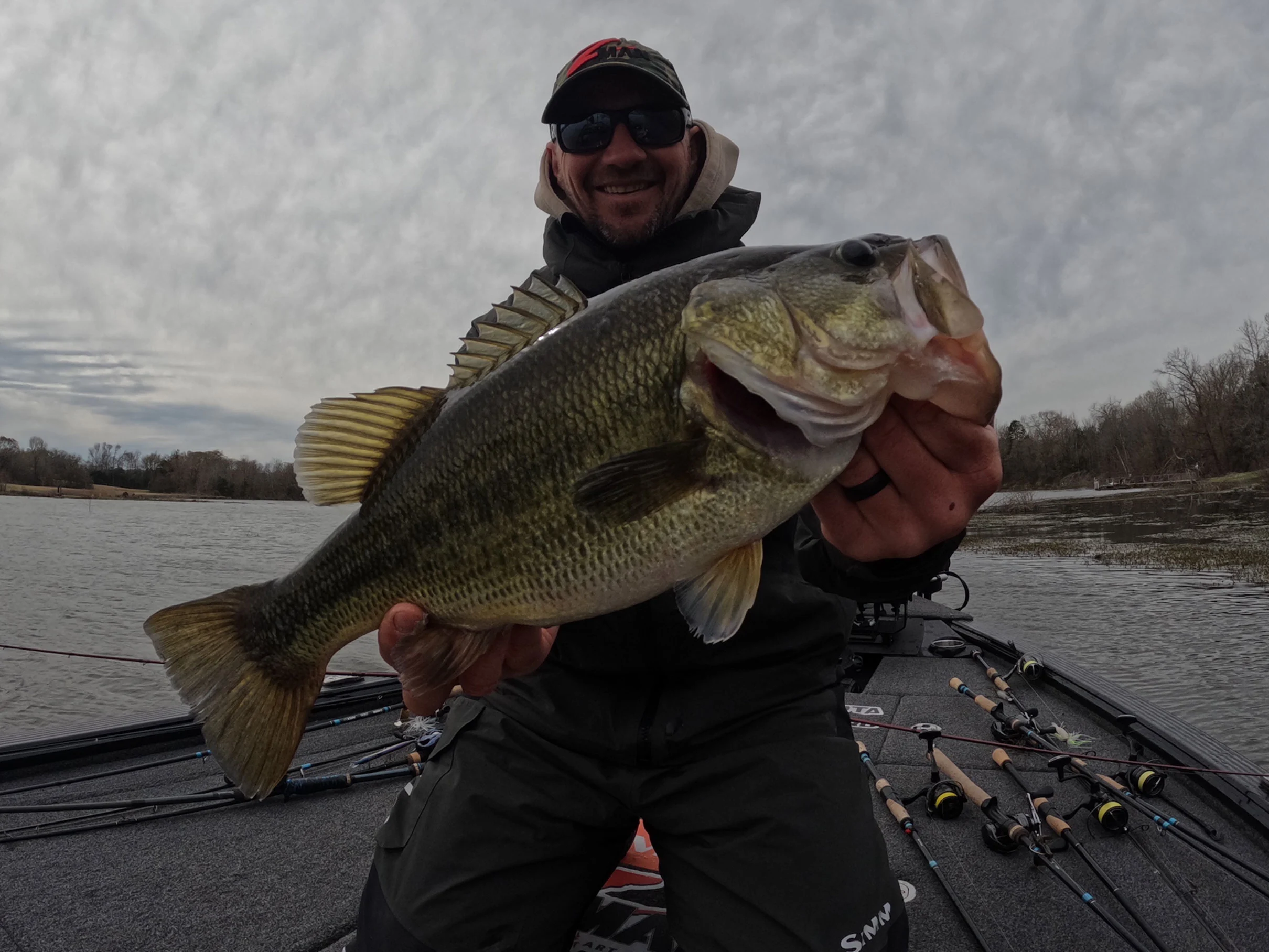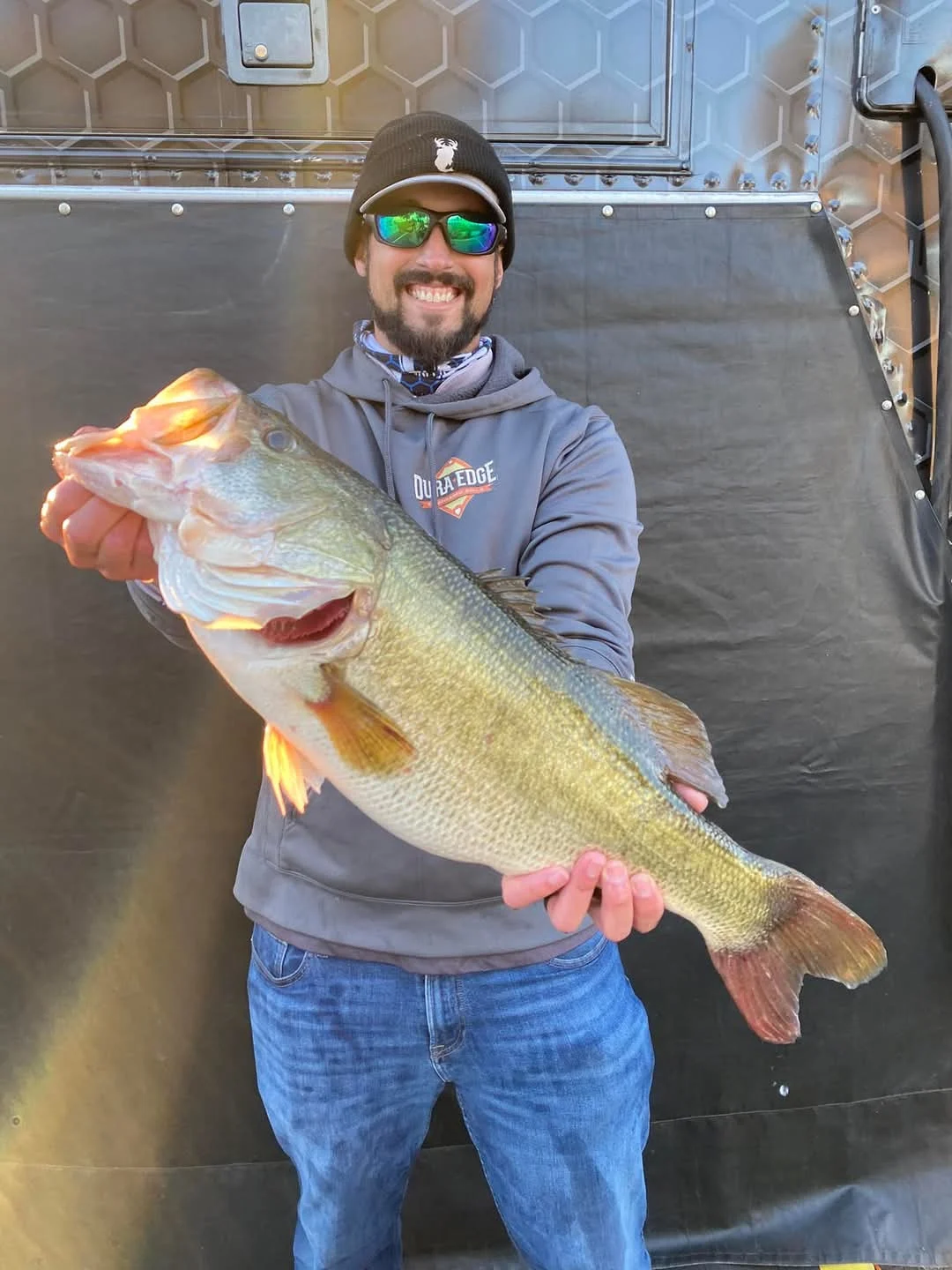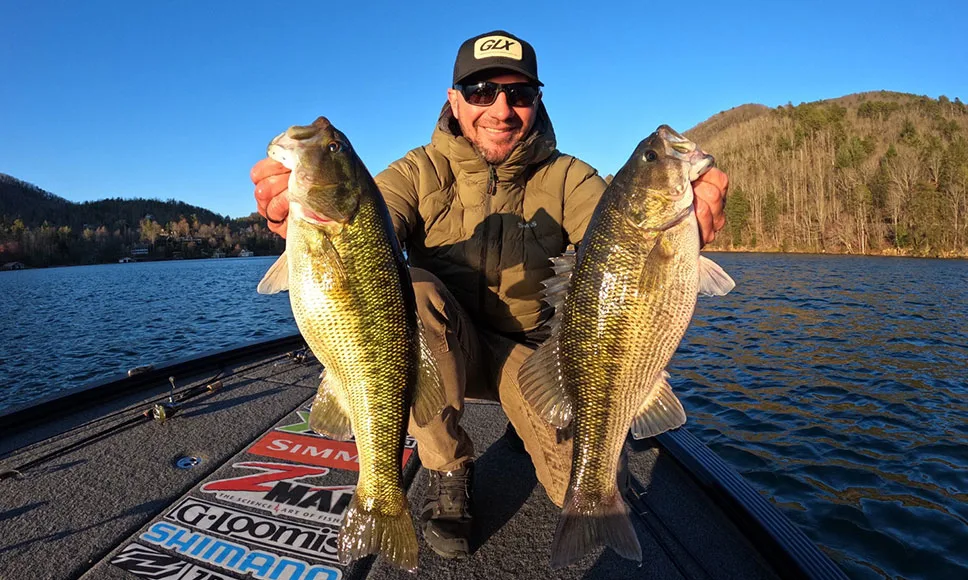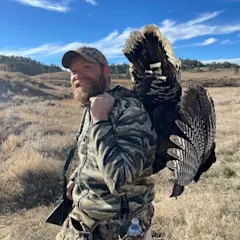Cabin fever isn't fun. In fact, it's downright bad for your health. And if you're a serious bass fisherman, there's no reason to torture yourself like that. While much of the county is huddled inside next to the heater, there are die-hard anglers netting trophy largemouth and big spotted bass across the country's more southern lakes.
In parts of Florida, for example, bass are already in pre-spawn patterns and could be heading for shallow-water beds any day. Texas, Louisiana, Alabama, Georgia, and South Carolina all have lakes that are popular hotspots for good winter fishing, particularly with anglers looking to a net a trophy. To narrow it down, we surveyed a long list of tournament fisherman for up-to-date details on their favorite wintertime bass fishing destinations. So if you're bundled up and bored in a place where it's too cold to fish, pack your bags and head for one of these eight phenomenal fisheries.
1. Sam Rayburn, Texas
This list could be made up of Texas lakes alone, but the Lone Star State fishery that came up more than any other when talking with tournament pros was Lake Sam Rayburn. The largest man-made reservoir inside Texas borders, Sam Rayburn was impounded in 1965. Three years later, the 115,000-acre lake had already hosted 31 B.A.S.S tournaments. Today it's the site of some of the season's earliest tournaments, which start kicking off in January. In the winter, anglers tend to pull fish from deeper water using shad-mimicking swimbaits, traditional spinner baits, and deep-diving crank baits as big as 5-inches long. Jigs and lipless crankbaits in red crawfish patterns can be productive as well.
2. Lake Murray, South Carolina
Located in the middle of the Palmetto State near Columbia, Lake Murray is a 50,000-acre impoundment with healthy populations of largemouth bass and stripers, and it was a number-one favorite of several of the pros we surveyed. Tournament anglers find winter-time success on Murray casting, Alabama rigs, swimbaits, and jigs. Some say the fish are more predictable and easier to target in January and February before they spread out and head shallow to spawn. Winter can also be a great time to target stripers on Murray. To do this anglers cast bucktails, swimbaits, or live bait in areas where gulls and loons are seen feeding on shad.

3. Lake Fork, Texas
Texas' Lake Fork has been one of the state's best bass factories for well over four decades. Like other trophy bass fishing destinations in Texas, Lake Fork got its start with the stocking of Florida-strain largemouth in the 1980s. Today, Texas Parks & Wildlife manages Lake Fork's bass population via a 16 to 24-inch slot limit, and the strict regulations have made it a true trophy fishery. Wintertime is the best time to catch Florida-strain largemouths weighing 13 pounds or more. Local anglers report success with spinnerbaits, lipless crankbaits, suspending jerk baits, and weightless worms.
4. Lake Guntersville, Alabama
Damed in 1939 by the Tennessee Valley Authority for hydroelectric power, Lake Guntersville has been a top bass lake since the earliest days of competitive angling. This northern Alabama gem is famous for its mats of millfoil, eel grass, and hydrilla—the perfect habitat for baitfish like bream and threadfin shad and the massive largemouth that feed on them. If you can find shallow-water grass mats still intact in late winter, drag rat or a frog patterns through the vegetation to elicit strikes from some of the lake’s biggest bass. Anglers also fish spinner baits above the grass or work jigs along break-lines where grass mats edge up to deeper water.
5. Harris Chain of Lakes, Central Florida
There are nine lakes in central Florida's Harris Chain that make up roughly 76,000 acres of fishable water. Prized for trophy largemouth, these lakes are naturally occurring and spring-fed, originating at the headwaters of the Ocklahwaha River. The quality of the fishery fell off a cliff in the early 90s thanks to mismanagement that included overzealous weed spraying, but "The Chain" has since returned to its former glory. Spring comes early on the Harris Chain with fish moving shallow to spawn at the beginning of January, barring a big cold front. Wether they're spawning or staging in pre-spawn patterns in shell beds or along grass lines, the fish will be fat and healthy. If you catch them spawning, you can sight cast to big bedded bass using soft plastic jerk baits, senkos, or Zoom trick worms.

6. Toledo Bend, Louisiana/Texas
Toledo Bend is a flooded forest created by the impoundment of the Sabine River in 1967. It straddles the border of Texas and Louisiana for roughly 25 miles, and its lunker largemouth (10-plus pounders aren't uncommon) draw anglers from all over the country. One of the keys to winter fishing on Toledo Bend is finding clear water; the fish won't travel far for food in winter, and you want them to spot your lure quickly. On cold days bass will stick to the bottom while sunnier days bring them up higher in the water column where they suspend in search of warmth. A 3/4-ounce jig with a trailer is a safe bet on Toledo Bend in winter. Fish the jig slowly next to vertical structure. Even if you only catch a few fish, they're likely to be big ones this time of year.
7. Lake Lanier, Georgia
Georgia's Lake Lanier is famous for big spotted bass that bite all winter long. Impounded by the Army Corp's Buford Dam on the Chattahoochee River, the lake is about an hour northeast of Atlanta. At 38,000 acres, it has some 700 miles of shoreline and it's roughly 200 feet deep at it deepest point near the dam. Spotted bass were illegally introduced to the 1970s, according to the Georgia Department of Natural Resources, but they've gone on to become one of the lake's most important fisheries—at least from a recreational standpoint. Sometime after the spots arrived, non-native blueback herring found their way into Lanier, providing a prime feeding source for the fast-growing gamefish. Then, in 1999, Georgie DNR implemented a 14-inch limit on spots, and the spotted bass population really took off. Guides and pros will target wintertime spots in submerged timber up to 40-feet deep. Find baitfish along an edge where submerged timber meets open water, and you're likely to find spotted bass piled up in the same area. Jigging spoons and ned rigs are popular artificial for anglers targeting wintertime spots on Lanier.
Read Next: 10 Top Trout Towns: The Best Trout Fishing in the U.S.
8. Lake Okeechobee, Florida
South Florida's Lake Okeechobee is the third-largest naturally occurring freshwater lake contained by U.S. borders. This gem of a lake got its name from two Seminole words meaning "Big Water." Though plagued buy higher-than-normal water levels and massive algal blooms in recent years, its still a big bass Mecca—and winter can be one of the best times to fish the "Big O." For proof, look no further than Scott Martin's record-setting performance at the St. Croix Bassmasters Open in February 2023. At the end of that of three-day event, Martin brought in an astonishing 90-pound total, besting a Bassmaters record set on California's Clear Lake back in 2000. By December, Okeechobee's bass are moving into shallow-water, and they usually start spawning by early February once water temps stabilize between 58 and 65 degrees. Anglers should hone in on clear water areas with lily pads, reeds, or grass mats and fish weighted senkos, swimming worms, or bladed jigs. If you're traveling to Okeechobee in January or February, avoid cold fronts as they can turn the bass bite off in a hurry.


